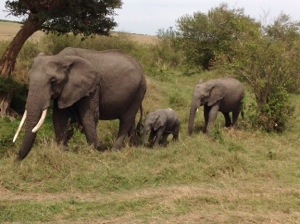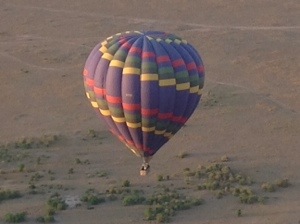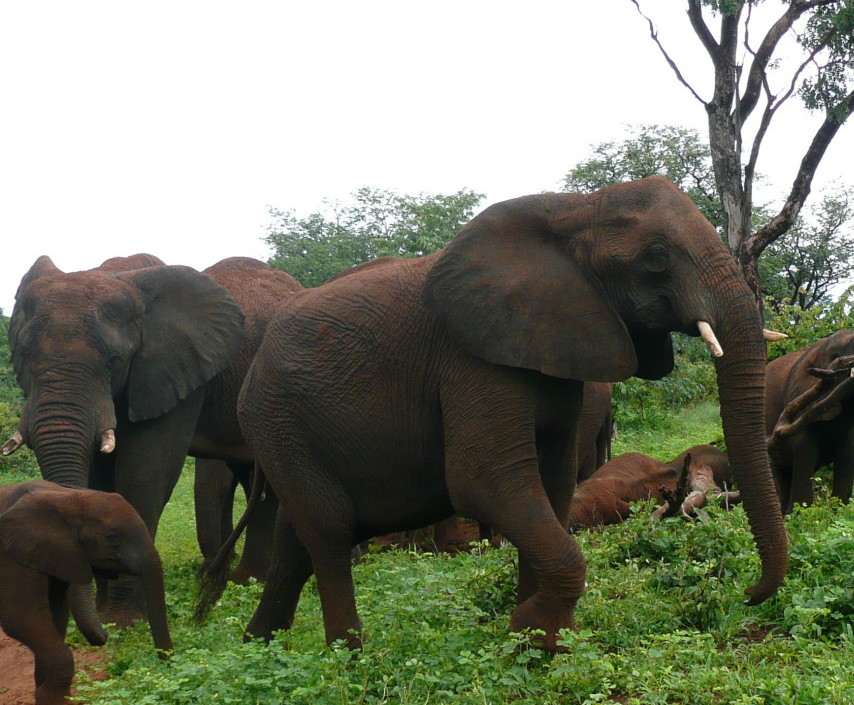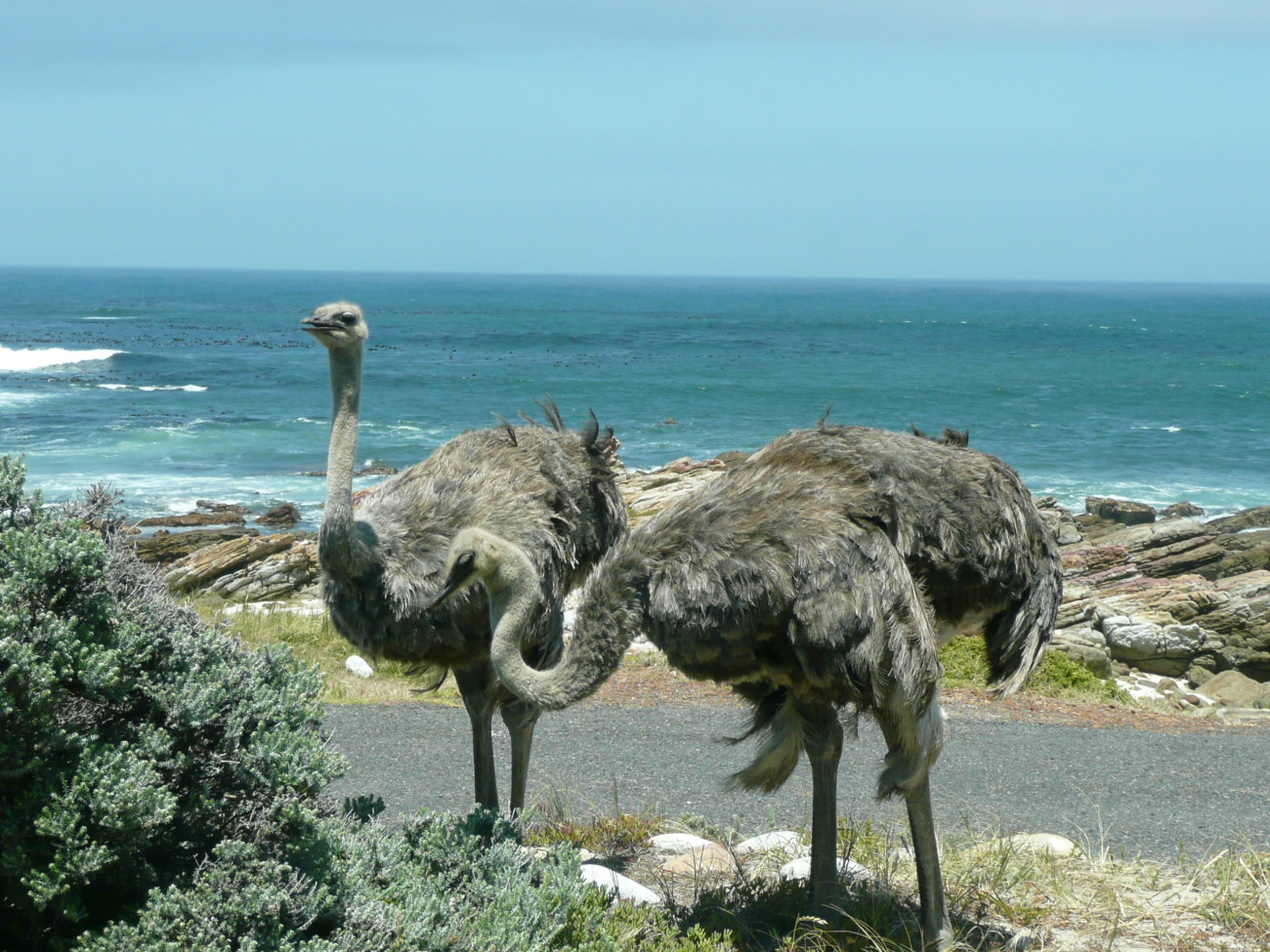
by Loti | Dec 10, 2013 | Africa, Animals, Keystone Species
Kenya. Hopping into the Range Rover, our guide asked which animal we wanted to see the most. Of course, my answer was elephants. We had seen 2 the day before, but one can never see enough elephants, at least in my book. We drove for a long time observing zebras, wildebeests, warthogs and finally, these three female elephants. And what a treat as the baby was only 3 weeks old! But why didn’t we just go straight to these amazing creatures and just spend all day with them? Surely the guides know where they are all the time? Not really. Elephants are very hard to track and subsequently count, it turns out. You can hardly go door to door conducting a census. And on average, they travel 15 miles a day which is a lot of ground. With conservation efforts largely based on numbers of elephants in a given herd, season to season, it is important to get accurate counts. Even with today’s technology, there are huge swings in estimates (numbers range from 400,000 to 700,000 worldwide). But beginning next year, a team of 46 scientists, led by the organization Elephants Without Borders, will try to count every elephant on the African continent using arial photography. This census information will be critical in helping us protect our elephants, hopefully giving this baby a chance to grow old and wise. Now that is...

by Loti | Nov 12, 2013 | Africa, Animals, Conquering Fear
Kenya. I never dreamed I’d be taking a photo of a hot air balloon from above it, in the air, in another balloon. But here I am at 6:30 one morning in Kenya. High above the hippos and gazelles who didn’t give us a second glance. Ballooning. Something in all my years, I had never done. And now that I have experienced, I will do it again. It was the most awesome floating sensation. Eerily quite in spite of the large blast of propane every now and then. I didn’t realize ballooning is the oldest (dating back to 1783) flight technology which carried people. And who could forget Dorothy missing her balloon ride home to Kansas in the Wizard of Oz. Or Jules Verne’s Around the World in 80 Days (published in 1873) which oddly did not involve a single hot air balloon for the trip (and I thought the whole trip was by balloon!) Balloons have soared to 69,000 feet high (oxygen required), travelled 4,800 miles on a single trip (by a duo including Richard Branson), and in our case flown a couple hundred feet over the Maasai Mara Preserve. What an amazing way to spend a morning. I was just sorry our ride was a short hour. Pure...

by Loti | Nov 6, 2013 | Africa, Animals, Conquering Fear, Wonder of the World, World heritage Sites
Kenya. So I have to admit I was somewhat apprehensive about going to Kenya after the Sept mall attack. Ok, more like terrified. Lions, tigers and terrorists, oh my! Adding to my anxiety was the maze of airport parking lots we walked through at the Nairobi airport after landing. Past the charred, empty buildings of the international terminal. Charred buildings! Apparently I was one of the few who hadn’t heard about the massive electrical fire at the airport in Aug. After boarding our turbo prop plane (triple yikes) for the 45 minute flight to the Maasi Mara game preserve, I finally breathed. At this point I am wondering why we just couldn’t fly in on the private jet and then I saw our landing strip below (pictured here). Now I get it. I am doomed! Of course we made a perfect landing. And so began the most memorable experience of my life, the migration of over 1.5 million wildebeest, zebra and gazelle with a few warthogs, hyenas, lions, giraffes and baboons thrown in. Although we were at the end of the season, I have since learned the migration is considered one of the Seven Wonders of the World (according to USA Today). So by experiencing sheer terror, came sheer joy. The coolest gift of...

by Loti | Oct 7, 2013 | Africa, Australia, Conquering Fear, Easter Island, Fiji, Food, Indonesia, Panama, Portugal, Travel, United States
Miami/FT Lauderdale . Arriving at our kicking off spot for the jet trip around the world, I am vacillating between being totally terrified (I mean what was I thinking about signing up for a trip with 23 people I don’t know) and feeling completely exhilarated (what an adventure). We visit 8 countries in just 22 days on our Airbus (which hold 24 travelers plus 3 pilots, one engineer, 4 flight attendants, a full time chef and 4 tour guides, plus an IPad to use). So just how far is it around the world? I was guessing 50,000 but it turns out it’s just under 25,000 miles, barely enough to get Silver medallion status on Delta. So if you have any minimal status on any airline, you have probably flown the equivalent of around the world. I just happen to be doing it all at one time. And which way do you want to travel? East to west or the opposite, west to east? As with so many things, I never really thought about it. Our pilots feel flying from East to West is much easier on jet lag. You generally arrive during daylight and then can go to bed at a normal time. Which is great as our entire trip is east to west. We leave for Panama in the morning for a short 2.5 hour trip with no time change so I think we will be safe from jet lag for a couple more days. By this time tomorrow, we will have traversed one of the largest locks in the world (the largest is in Belgium). The journey...

by Loti | Jul 29, 2013 | Africa, Animals, Insects, Keystone Species
Africa. So what do a full moon and honey bees have in common? Elephants, of course. Really? Well they are both crop deterrents to elephants. As elephants and humans compete for scarce land and water resources, they come into conflict, sometimes with fatal results. But recently researchers found elephants stay away from crops during a full moon leading them to speculate elephants understand there is a greater risk of detection by humans during a moon lit night. Pretty smart elephants. And it turns out, elephants are afraid of bees. And rightly so. Swarming bees sting elephants around their eyes, inside their trunks and pierce the skin of baby calves. So researchers erected a beehive fence with hives every 10 meters around field crops. The results were phenomenal with only one elephant breaking through the “fence” in a 2 year period. Plus the farmers get the honey which provides much needed income. A real win, win if you ask me. And the idea came from Lucy King, a biologist with Save Our Elephants, who observed elephants avoiding trees with beehives. A simple idea which is making a huge difference in the lives of farmers and elephants. Brilliant! ...

by Loti | Jul 23, 2013 | Africa, Birds
Africa. Driving along the coast of the Cape Of Good Hope, we came across 2 ostriches just hanging out by the side of the road. I hadn’t realized how big these birds can get with males reaching up to 9 feet in height and weighing over 300 pounds. And they can’t even fly, but they sure can run. An ostrich can sprint over 43 miles an hour. And with those strong legs they can kick a lion or human to death in one quick thrust. Yikes! So it is interesting that ostriches are raced in Africa and even some parts of the US with a jockey on their back, just like horses. Of course there is much debate about the cruelty of this practice, but then again we eat ostrich meat, enjoy their eggs (one ostrich egg is the equivalent of 24 chicken eggs, use their skin for leather and adorn our hats with their feathers (ok, some people do although they don’t do much justice to my baseball hats). And what about one of my favorite sayings that ostriches stick their head in the sand to avoid conflict, just like I try to do. Unfortunately, it is not true. They will lie down and press their head and long neck to the ground to be less visible if danger approaches, but they don’t bury their heads. Damn. I guess I’ll just have to come up with another saying. ...







